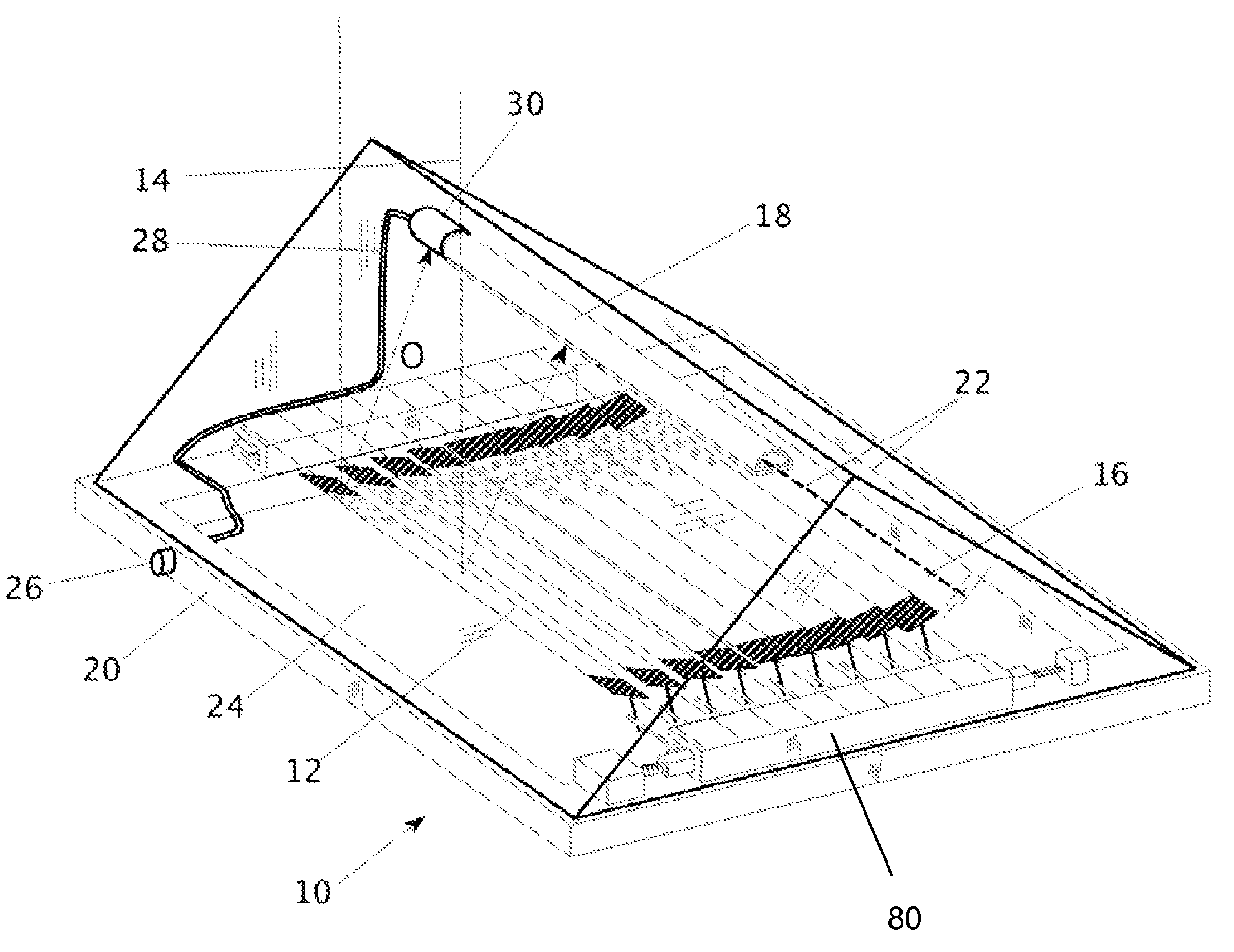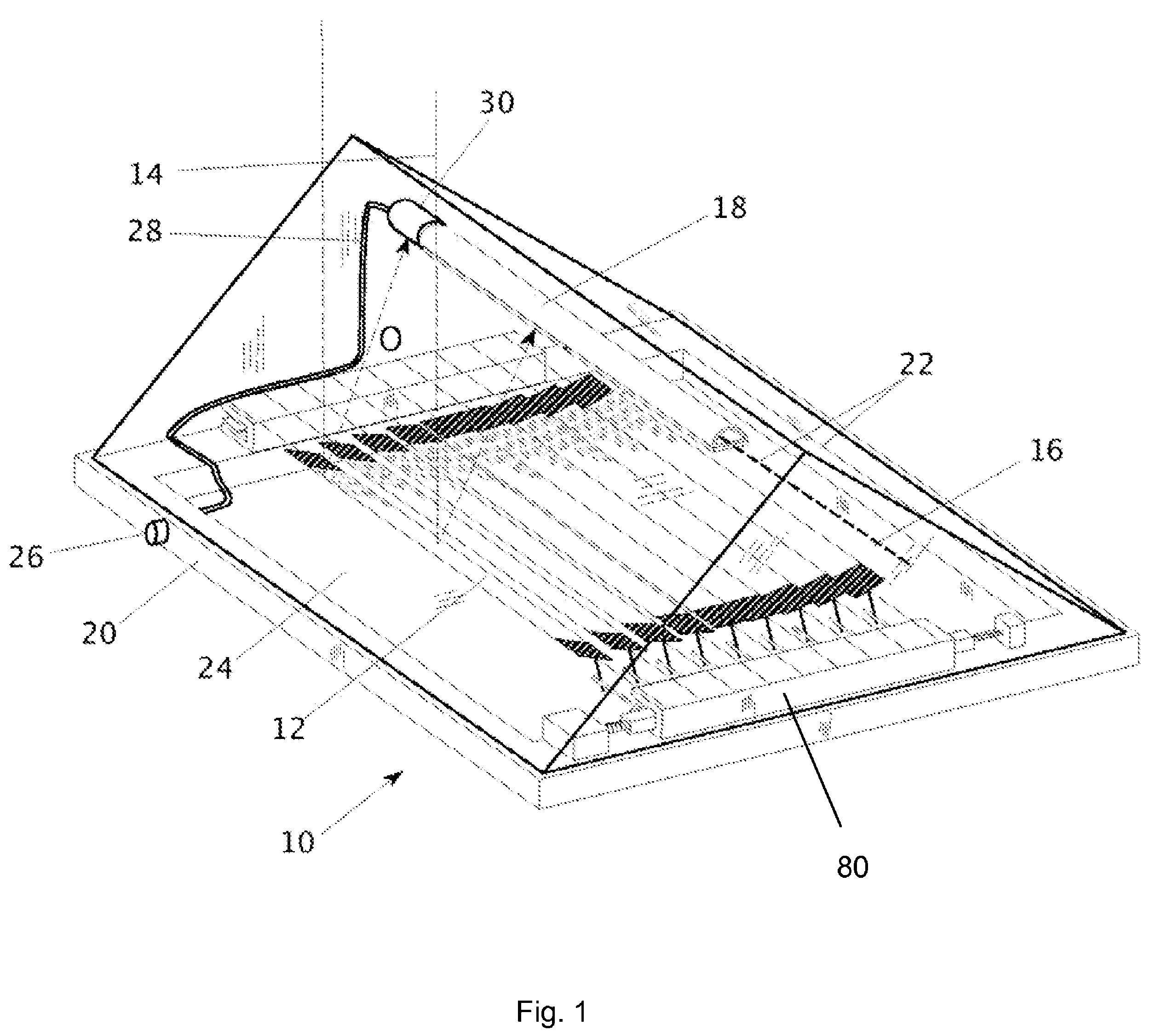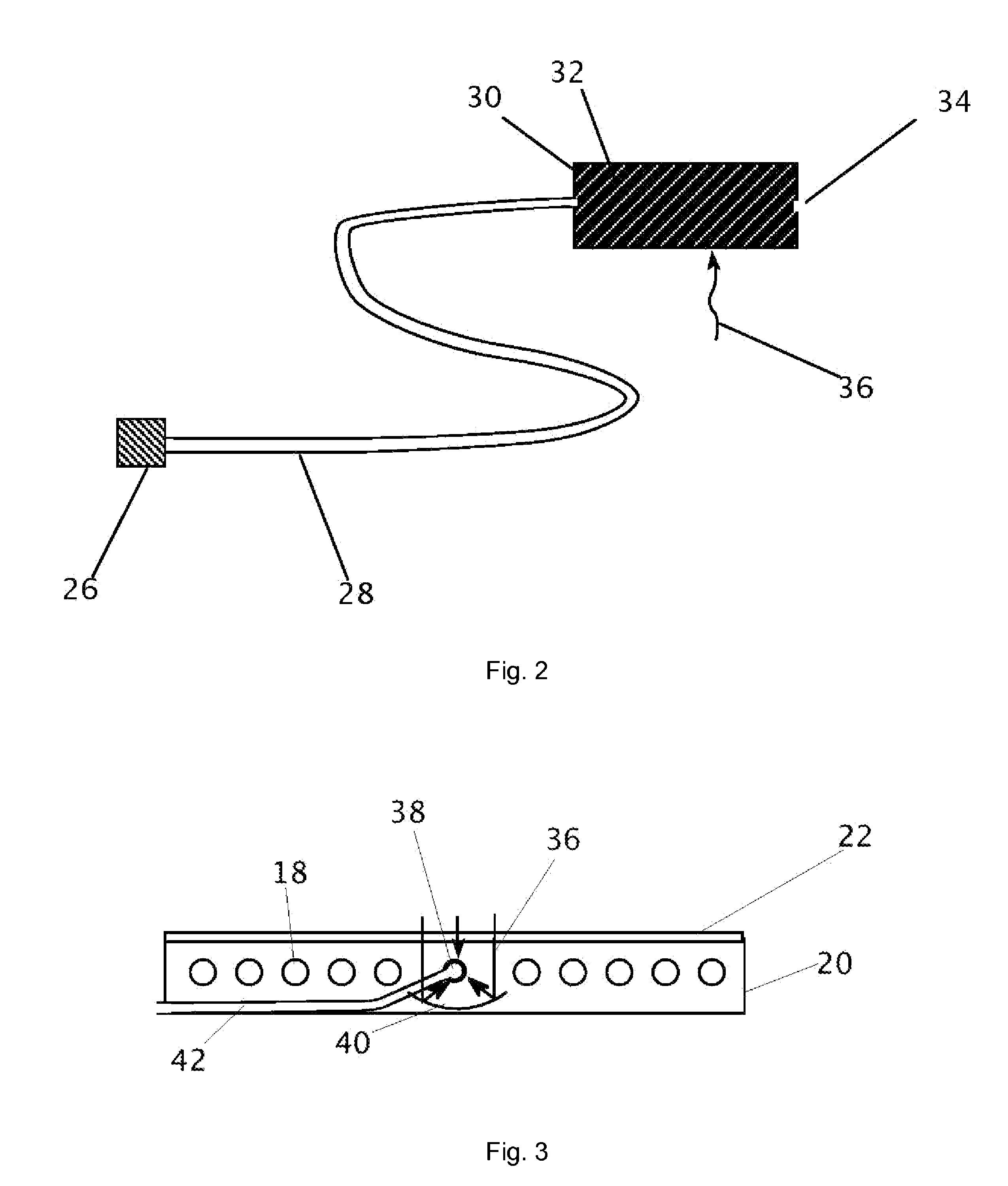Solar water vapor ejector
a solar energy and ejector technology, applied in the direction of heating types, renewable energy machines, separation processes, etc., can solve the problems of preventing the system from operating at all, water vapor in the enclosed volume, and significant loss of power generation capability, so as to achieve low construction and installation costs, the effect of minimal required maintenan
- Summary
- Abstract
- Description
- Claims
- Application Information
AI Technical Summary
Benefits of technology
Problems solved by technology
Method used
Image
Examples
Embodiment Construction
[0038]Referring first to FIG. 1, reference numeral 10 generally designates a dust-tight enclosure for a solar power harvester. A taught in prior art, the solar power harvester may be a planar array of photovoltaic cells or heat-absorbing coolant pipes; it may be a concentrating collector such as a parabolic dish or parabolic trough; or as illustrated here: a Fresnel collector comprised of a planar array of reflective slats 12 positioned to each reflect sunlight 14 onto a common focus 16. The sunlight impinges on a solar converter 18 at the common focus 16 which converts the solar irradiation 14 into useful power by photovoltaic cells (PV) which generate electricity and / or blackened pipes which heat an internal working fluid. In an embodiment, the solar power harvester further comprises a heliostat 80 to focus the solar irradiance.
[0039]The dust-tight enclosure 10 comprises a base 20, upper transparent window or windows 22, and a sealed bottom covering 24. The window is typically a g...
PUM
 Login to View More
Login to View More Abstract
Description
Claims
Application Information
 Login to View More
Login to View More - R&D
- Intellectual Property
- Life Sciences
- Materials
- Tech Scout
- Unparalleled Data Quality
- Higher Quality Content
- 60% Fewer Hallucinations
Browse by: Latest US Patents, China's latest patents, Technical Efficacy Thesaurus, Application Domain, Technology Topic, Popular Technical Reports.
© 2025 PatSnap. All rights reserved.Legal|Privacy policy|Modern Slavery Act Transparency Statement|Sitemap|About US| Contact US: help@patsnap.com



